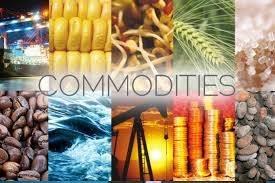- Home
- About Us
-
Products
Commodity Trading
Portfolio Management Services
- Career
- Contact Us

Basic economic principles of supply and demand typically drive the commodities markets: lower supply drives up demand, which equals higher prices, and vice versa. Major disruptions in supply, such as a widespread health scare among cattle, might lead to a spike in the generally stable and predictable demand for livestock. On the demand side, global economic development and technological advances often have a less dramatic, but important effect on prices. Case in point: The emergence of China and India as significant manufacturing players has contributed to the declining availability of industrial metals, such as steel, for the rest of the world.
Types of Commodities - Today, tradable commodities fall into the following four categories:
Volatile or bearish stock markets typically find scared investors scrambling to transfer money to precious metals such as gold, which has historically been viewed as a reliable, dependable metal with conveyable value. Precious metals can also be used as a hedge against high inflation or periods of currency devaluation.